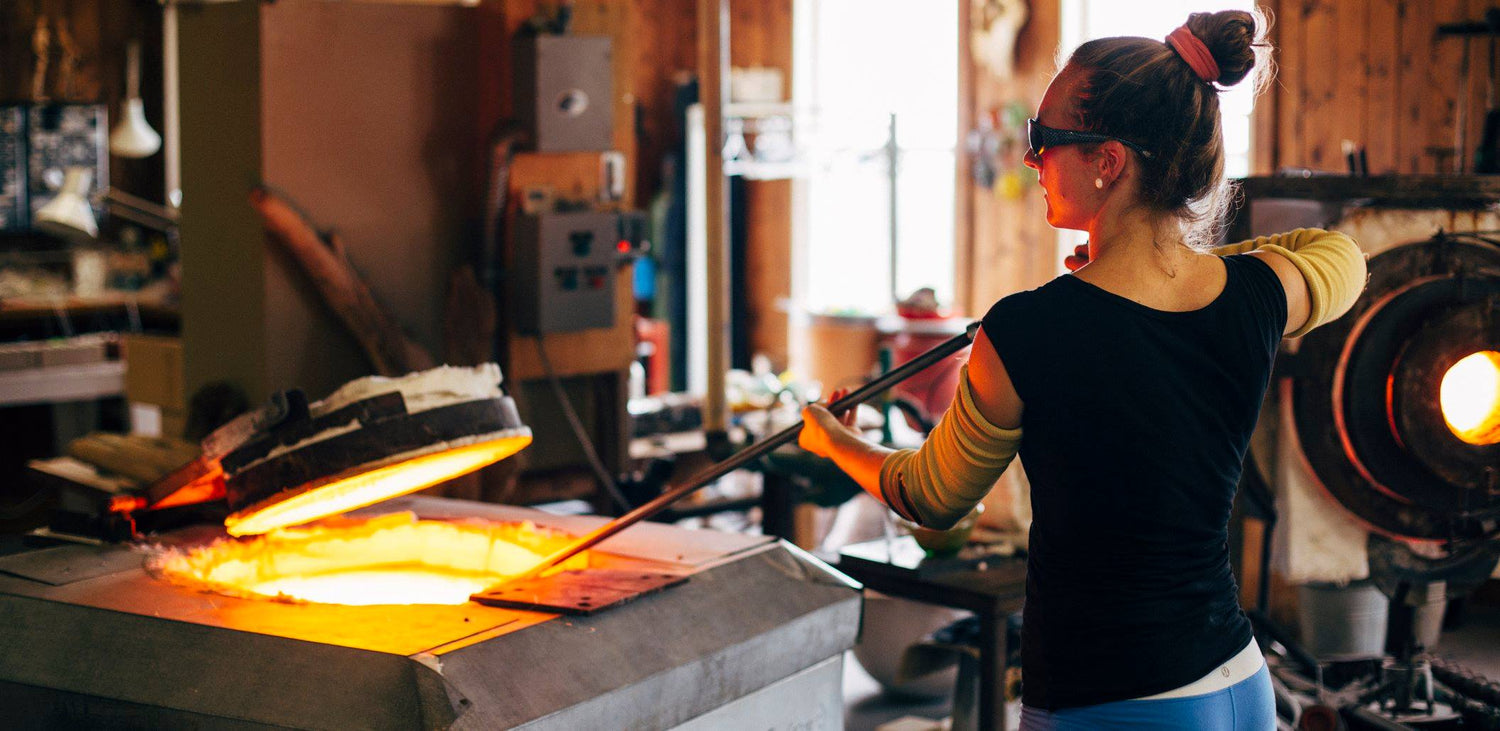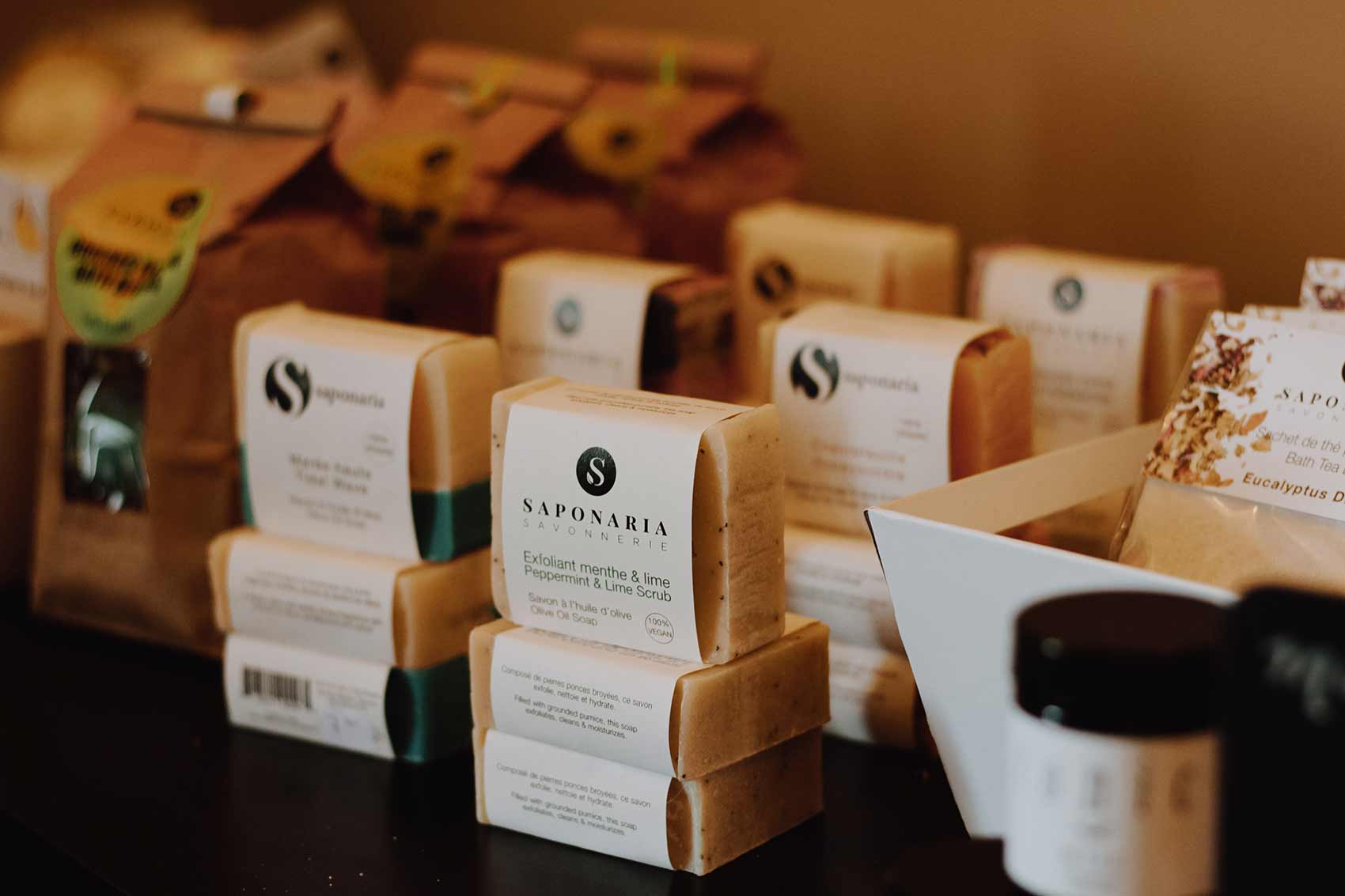CRAFTS ARE VECTORS OF CREATION WITHIN QUEBEC SOCIETY. THEY ARE AT THE HEART OF QUEBEC ART, IN CONSTANT EVOLUTION, MAKING ANCESTRAL TECHNIQUES CURRENT SUBJECTS. IT IS THROUGH THE INSTITUTIONS THAT EMBODY THEM THAT THE KNOWLEDGE AND KNOW-HOW WHICH ARE TRANSMITTING THESE DISCIPLINES THROUGH THE DECADES. THIS SERIES OF ARTICLES IS INTENDED TO BE A PRESENTATION OF EACH OF THE DISCIPLINES THAT MAKE UP THE CRAFTS AND THAT SHOWCASE QUEBEC CREATIVITY. WE HAVE ALREADY ADDRESSED THE PROFESSION OF CERAMIST , THAT OF JEWELERY AND CABINETMAKER . WE WILL NOW ADDRESS THE GLASS BLOWER JOB.
Art is both timeless and terribly rooted in its time. These professions, which come in a variety of disciplines, are both ancient and modern, straddling the moment of their creation and the moment of their application. Some remain more attached to the past than others. Glasswork is one of those centuries-old whose tools and materials have changed little over time. Being a glassblower requires innovation and finding the right balance between tradition and modernity. It is on this profession inscribed in delicacy and a completely different temporality that this article focuses.
The techniques of the trade
The profession of glassblower or glassblower, as its name suggests, consists of working with glass as a base material. The latter is divided according to a binary typology. Clear glass, i.e. colorless, differs from colored glass. There must be a compatibility of the chosen materials so that the work can combine one and the other. Glass has impressive versatility. The latter can be recycled an almost incalculable number of times. Glass can be melted and remelted repeatedly to be reshaped in various ways. This material then produces little waste and surplus.

"
Because we care about the environment, instead of throwing away our failed pieces of glass, we recycle them to make new creations. Thus, it is possible for us to reduce our waste by 50%, easily. Moreover, all this recycled material gives us the chance to create new works and push our artistic research further.
– Catherine Chevrier-Turbide and Sophie Bourgeois, The Medusa
The glass transformation process, from material to work of art, can be summarized in three major distinct stages. Initially, the clear glass is kept in constant fusion in a first oven, the temperature of which appears to be set at 1300 degrees Celsius. This glass straddling the liquid and solid state is then gripped using stainless steel sticks. Glass work can actually begin using the various techniques and colored glass can be added. The glass must remain molten to remain malleable. It is therefore regularly reheated in a second oven throughout the work. Finally, once the part is finished, it is placed in a third oven where it is gradually cooled so that it does not crack when it is fixed. This stage lasts approximately one night.
The work of the glass varies according to the artist who is dedicated to it. Everyone's signature is felt through their art. There are three major avenues to working with glass: shaping, blowing and sculpting. Several variants are then added to these. Torchwork allows for more delicate work, a bit like a microscopic version of glasswork. There is also thermoforming. A technique for working flat glass at very high temperatures, also known as fusion glass.

The dedication behind the art
Working with glass, like all crafts, is not the simplest path. Getting started as a glassblower or getting into art in general requires a lot of perseverance and patience. Equipment for working glass is expensive and large in quantity. You have to be determined to carry out the creation of your own workshop, if necessary. In addition, creativity, imagination and originality are required if you want to go beyond the immemorial past of this art profession to make it something current and superb. Finally, as with any small business, teamwork must be rigorous. It is essential to surround yourself well to start your business and get started in the artistic field. You have to work tirelessly and put forward optimism and self-confidence to chart your course. It means to consider with indulgence one's mistakes. They are an integral part of the journey and push to go beyond.

“Definitely, it seems to someone who thinks of choosing crafts as their main job to be optimistic about the future, to surround themselves well and to trust themselves! By following your need to create and express yourself, you end up tracing your own artistic path and if you are attentive and sensitive to what surrounds you, you know how to seize the right opportunities to move forward. You have to work hard, as in all
– Catherine Chevrier-Turbide and Sophie Bourgeois, The Medusa
Under the projectors
Signé Local counts several glass artists among its members. The Medusa is one of them and has been a valuable contributor to this article. The company is located in the Magdalen Islands and is the oldest blown glass workshop in Canada. She proudly puts forward her island character and incorporates beach sand or driftwood into her creations. Its two co-owners, Catherine Chevrier-Turbide and Sophie Bourgeois, form an energetic and creative duo that constantly renews glass work.

“In her work, Sophie plays with balances, solids and voids, in a search for lightness and aesthetics. She first works on technique, which, for her, is more than a tool, but the culmination of a mastery of the material and therefore an accomplishment as a glass artist. The technique, then the form, then the meaning. These are the aspects that define in the same order the creations of Sophie Bourgeois. »
“Influenced by the island environment from which she comes, Catherine Chevrier-Turbide is interested in this forced proximity between people. Through her glass creations, she explores the “forced living together”. Thus, she creates glass microcosms, islands of glass, universes where she connects different glass elements. The resulting encounters are sometimes superb, sometimes curiosities. First there is the encounter between her and the work and then the desire for the work to meet other people. »
Their workshop also offers a shop, courses and guided tours. Everything is there to please locals and tourists alike. The company manufactures glass jellyfish representative of its identity among its many creations. She recently embarked on the creation of chandeliers. She has also been working for fifteen years on integrating the ashes of the deceased into works of art to make memories.

Other companies working with blown glass
Boutiterre

Boutiterre
Thanks to an approach and an extraordinary know-how, Boutiverre offers you a unique solution in terms of lighting and decorative objects. All products are made in our blown glass workshop from recycled glass using traditional techniques. No matter the character of your decor! Boutiverre lighting and decorations will fit in perfectly, while giving it a touch of originality!
Mountain glassware

Mountain Glassworks
A professional glass artist who also works in visual art, Nancy Couturier is a native of Ville-Marie.
Owner of the Verrerie de la Montage since September 2009, she has set up a creative space where she makes various objects, stained glass and jewelry. Using torches, ovens, glass cutters, saws, grinding wheels, soldering irons and many other tools, Nancy blows glass, fuses it and makes it malleable to be able to reinvent it.
In short, glasswork is a century-old art that has endured through the ages. Product of renewal, recycling and great originality, glass is transformed to adorn itself with its finest finery and become a superb artistic creation. The work of glass then remains a craft to be discovered and rediscovered constantly.

Reviewed by Sandrine
photo credits: The Medusa





Leave a comment
This site is protected by hCaptcha and the hCaptcha Privacy Policy and Terms of Service apply.